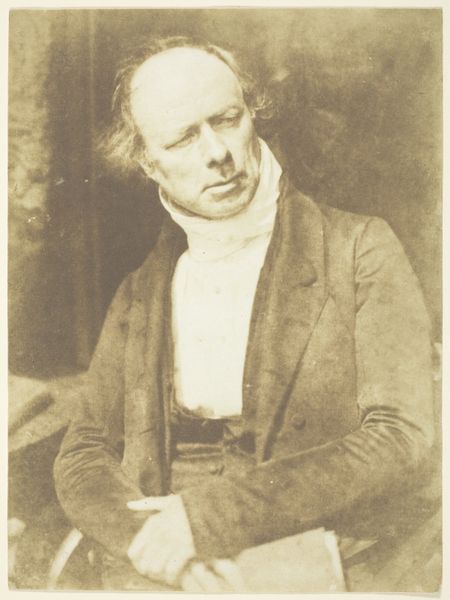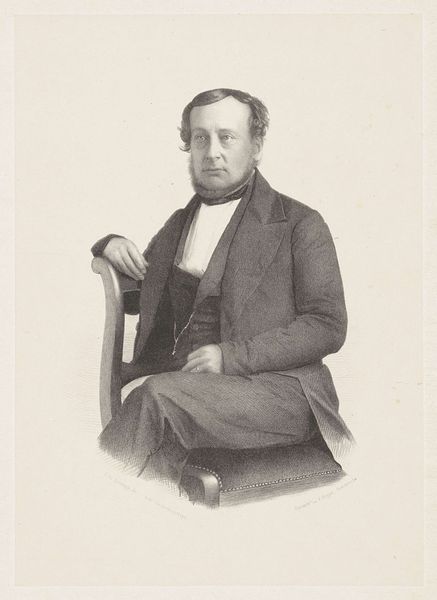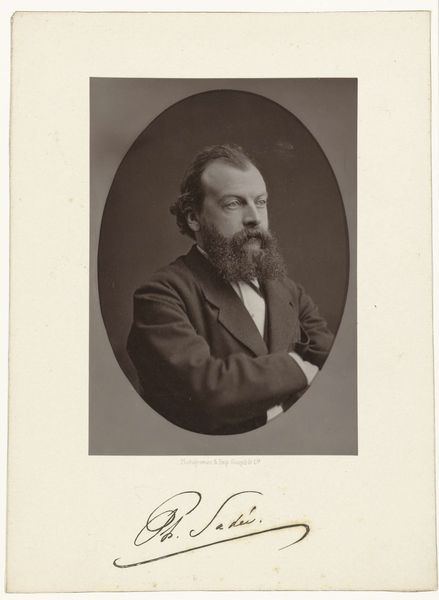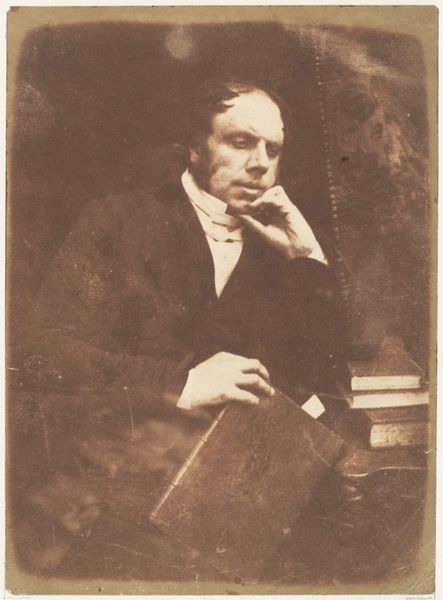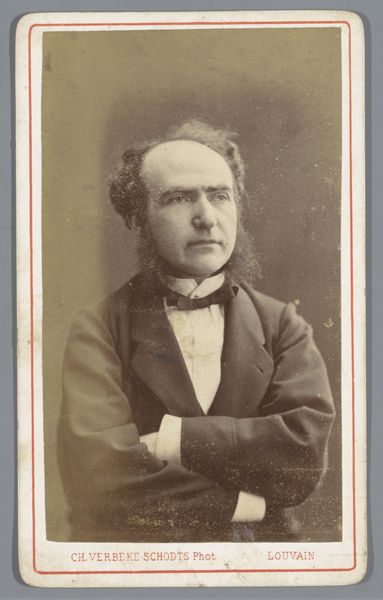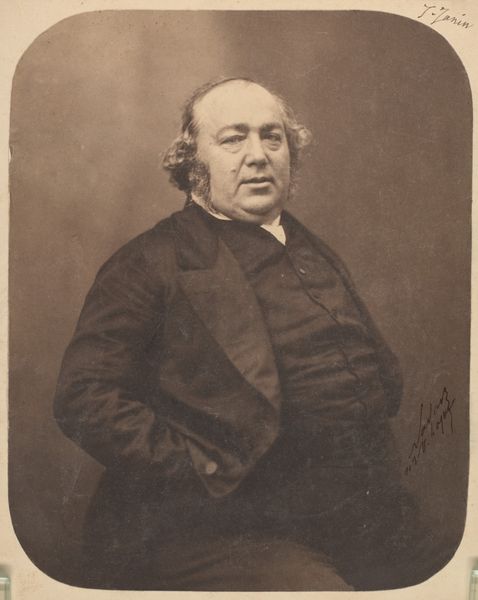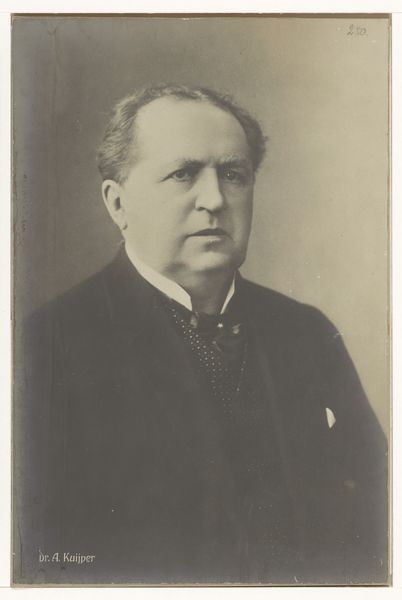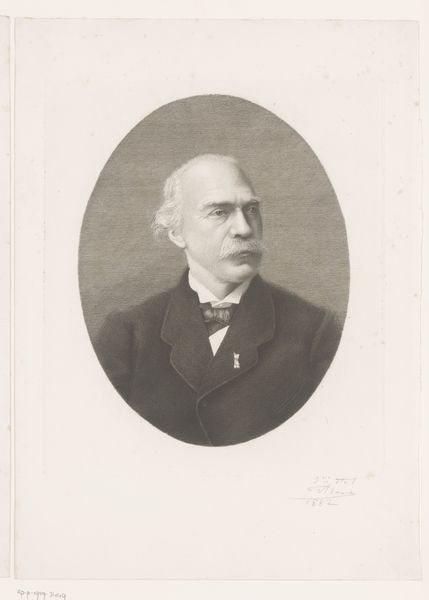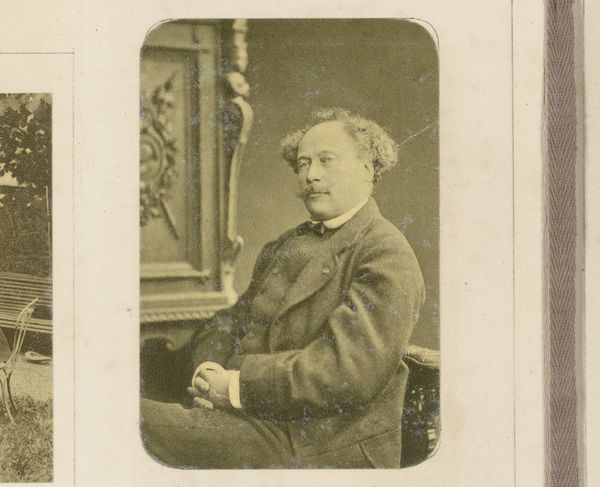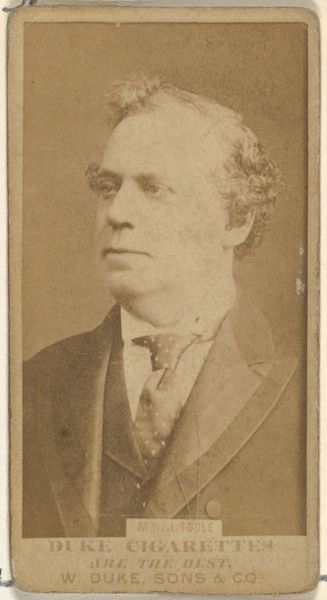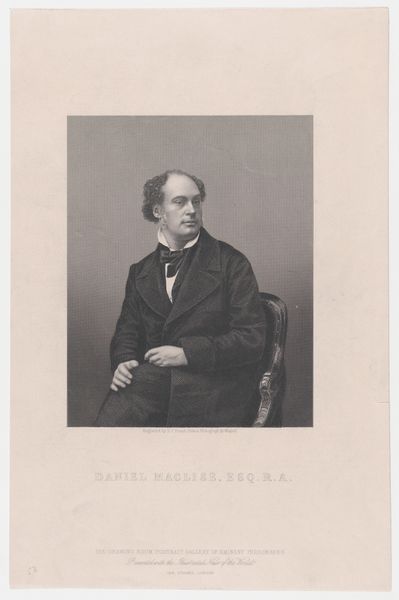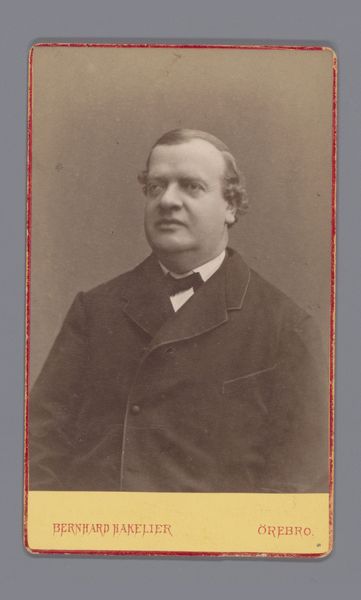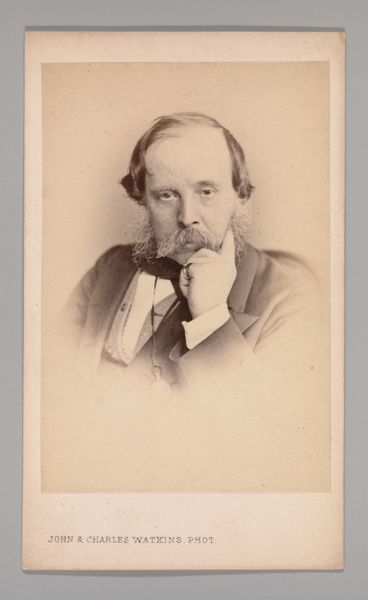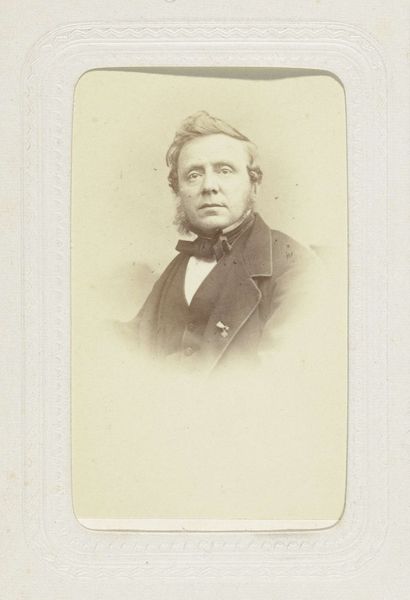
print, daguerreotype, photography, gelatin-silver-print, albumen-print
#
portrait
# print
#
daguerreotype
#
photography
#
gelatin-silver-print
#
albumen-print
Dimensions: height 300 mm, width 198 mm
Copyright: Rijks Museum: Open Domain
Curator: Immediately, I'm struck by the contemplative mood of this portrait, there's a real sense of introspection in the subject's gaze. Editor: This is "Portret van componist Julius Rontgen," likely created sometime between 1880 and 1920 by Rijshouwer's Establishment. It is part of a photographic series. You see here an albumen-print that brings out detail, made by exposing silver salts to light in an age defined by social changes around intellectual property in music, but, naturally, the materials matter too: Gelatin and silver transform through the maker's hand, and become, literally, an image. Curator: That era also saw the rise of celebrity culture. Was this photograph commissioned to solidify Rontgen’s image within musical circles? The deliberate composition, his pose... it all seems carefully constructed for public consumption. The albumen print itself, a mass produced media and commodity to increase social outreach through photography studios such as Rijshouwer’s Establishment? Editor: Precisely, we can talk about materials, the shift in photographic processes from daguerreotypes to these gelatin silver prints points to both technological advancement and a democratization of image-making. Curator: I agree, that accessibility changes the nature of portraiture. It is a very direct, simple photographic media as we see its impact across many populations and diverse sitter characteristics. Editor: Yes! This method provided consistent reproduction, aiding artists in broadening their practice while embedding new standards for how art could exist. Now how everyday citizens perceived artwork became something different from ever before Curator: Looking at it through the lens of the time, it serves as a testament to his social standing and a way for him to participate in a broader cultural dialogue about art. Editor: A very early photographic media for someone deeply engaged with the rapidly shifting culture of late 19th century Europe. Considering its journey through time, now resting as this captured still image. Curator: Seeing the technology and the time converge...It all comes to life. Editor: Precisely: it's all in how we process.
Comments
No comments
Be the first to comment and join the conversation on the ultimate creative platform.
